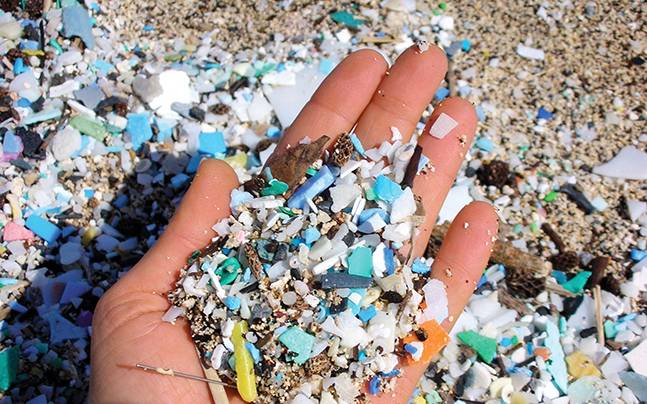At Chennai’s National Institute of Ocean Technology, scientists recorded fluorescent blue and green microplastic particles and fibers in species of marine worms. They get inside the bodies of marine animals. They can cause internal damage. Apart from accumulating toxins, microplastics also threaten micro fauna such as plankton (single-celled tiny creatures that fish and even whales feed on) that thrive in oceans.
Studies have shown high concentrations of microplastics . This is in addition to chemical pollutants in fish tissue at Keri and Galgibaga beaches at Goa. The seas near Kerala, Mumbai, Chennai and the Andaman and Nicobar Islands are among the worst polluted in the world. Religious and Recreational activities are the major contributing factors for the abundance of plastics in these beaches.
Microplastics Found in India’s Largest Lake
In Kerala, microplastics were found in all sediment samples of Vembanad Lake. The largest lake in India. It indicates their extensive distribution in the lake. Vembanad Lake – an estuarine -freshwater system, forms a part of the Vembanad wetland system recognised as a Ramsar site. So one can imagine how threatening this problem is.
Fishes and clams are the major source of protein to the local population. Presence of microplastics is a severe threat. It contaminates the food web of this lake. Even in Daman & Diu, plastic particles were found in the stomach of a Longman’s Beaked Whale. The analysis of sediment samples from a remote coral island in the Indian Ocean indicates presence of macro, meso and microplastics.
State University of New York in Fredonia: 90% bottled water high in microplastics
A recent study by the State University of New York in Fredonia stated that around 90 per cent of bottled water in the market has high levels of microplastic. Small enough to be ingested. The University analysed 259 bottles of water from 19 locations of nine countries. One of which was Delhi. This study is of great significance. It proves microplastics are finding their way into the human body. It can be through drinking water as well as sea food.
It is high time that we understand the gravity of the situation. We have to wake up before it’s too late. The World Economic forum has predicted that by 2050 there will be more plastic than fish in the oceans. The journey to a plastic free world can be a difficult one, but is not impossible.
- How Covid-19 Is Having a Lasting Impact on the Environment - May 14, 2020
- NCAP: What are the Features of National Clean Air Programme? - April 8, 2019
- National Clean Air Programme (NCAP) May Reduce Particle Concentration - April 6, 2019
- Microplastic in Marine Life: Finds Chennai’s Institute of Ocean Technology - February 19, 2019
- Microplastic Pollution in India Worst in Kerala, Mumbai, Chennai, Goa - February 9, 2019
- How Microplastics Kills Marine Life and Enters Human Food Chain - February 1, 2019
- National Policy on Biofuel Will Reduce India’s Reliance on Fossil Fuels - January 30, 2019
- Shipping Industry Can Use Modern Technologies to Cut Emissions - January 16, 2019
- Environmental Impact Assessment: What Are the Various Aspects? - December 12, 2018
- World Elephant Day: Stop Human-Animal Conflict, Habitat Loss, Poaching - August 13, 2018

